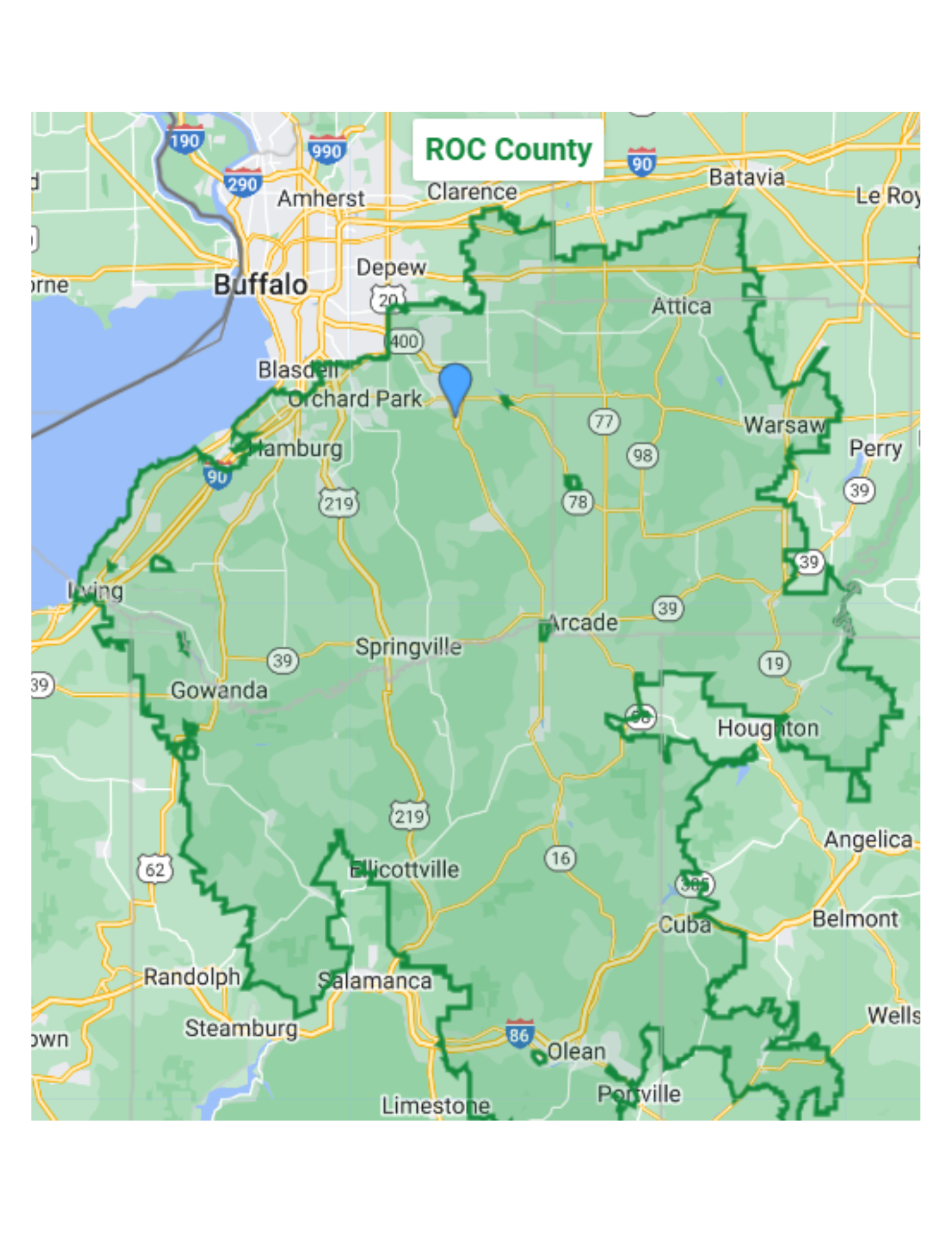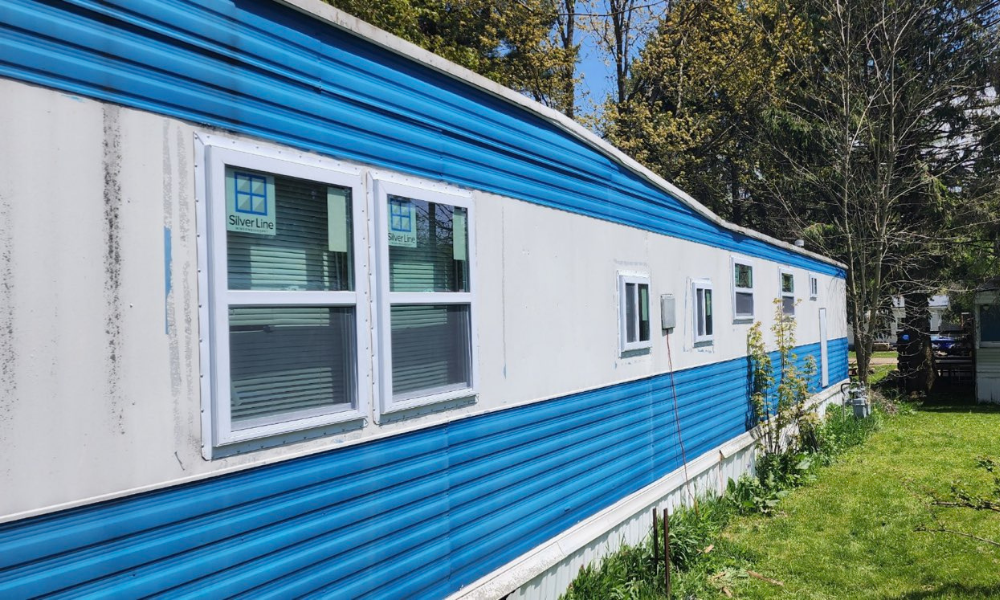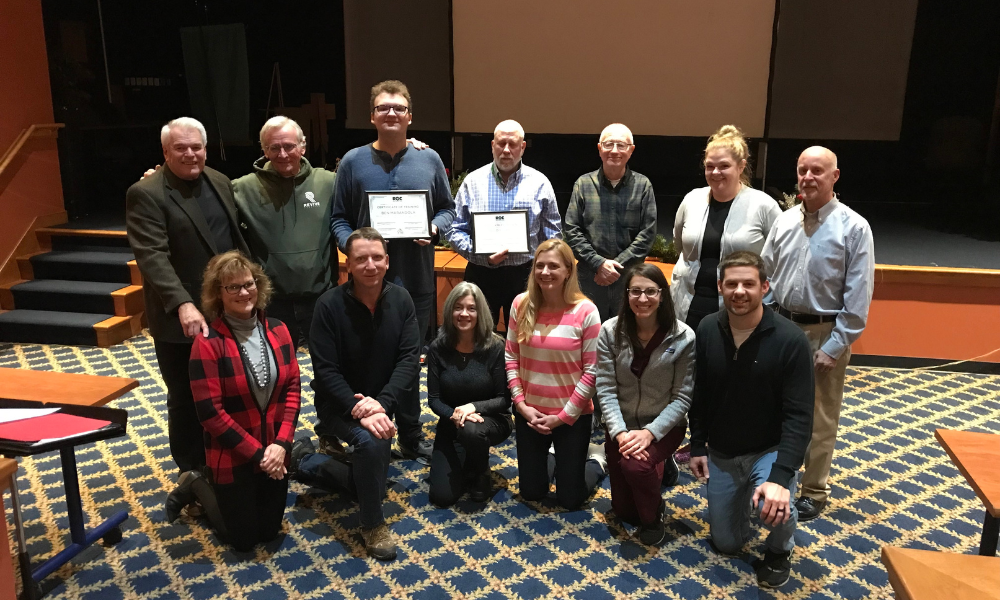Breaking the Cycle of Rural Poverty in Western New York

Welcome to ROC County
The Rural Outreach Center serves families and individuals living in ROC County – an area of southern Western New York that covers more than 60 zip codes.
People living in ROC County face barriers unique to rural populations, including limited (or no) public transportation, spread-out mental health services, and limited access to specialty services addressing housing issues, substance use, and domestic violence. For ROC County residents, there is a shortage of primary care and mental health providers.
Over 5% of families in ROC County live in deep poverty – meaning their household’s total income is less than 50% of the Federal Poverty Level. To put that in perspective, that means in 2023, a family of four living in deep poverty survives on less than $15,000 a year. The majority of families served at The ROC live on less than 150% of the Federal Poverty Level – or less than $45,000 a year for a family of four.
The residents of ROC County deserve access to centralized supportive services. That is where The Rural Outreach Center comes in – providing mental health services, care coordination, mentoring and tutoring, financial literacy, employment support and job readiness training, budgeting help, and so much more.
In ROC County...

Childhood Trauma is higher than elsewhere in WNY
Adverse Childhood Experiences, or ACEs, measure the levels of trauma and stress resulting from neglect, abuse, and other issues during the first 18 years of an individual’s life. In ROC County, individuals report higher ACEs scores than anywhere else in Western New York.

Housing Costs Are Rising Rapidly
ROC County Residents with 4 or more Adverse Childhood Experiences are 4.2 times more likely to need housing assistance than those without any ACEs. Rising housing costs in ROC County are taking up more financial resources for families, making it hard to afford safe housing.

Food Assistance is a Growing Need
ROC County Residents with 4 or more ACEs are 5.6 times more likely to receive SNAP (Supplemental Nutrition Assistance Program) benefits than individuals without any ACEs. Limited food pantries in ROC County mean residents need to drive further to access other nutritional support.
...leading to a growing demand for The ROC
12% Increase
from 2023 to 2024 in the number of direct services provided.
20% Increase
year to year in general, housing, and food insecurity related requests
30% Increase
year to year in student academic stress and mental health requests
The ROC Makes a Difference
70% Increase
in children’s self-confidence when engaged with The ROC's programming and experiences.

96% Achievement
in adult Participants whose goal was to improve or maintain their savings.

72% Increase
between 2023 to 2024 in achievement for adults whose goal was to increase their total income.


